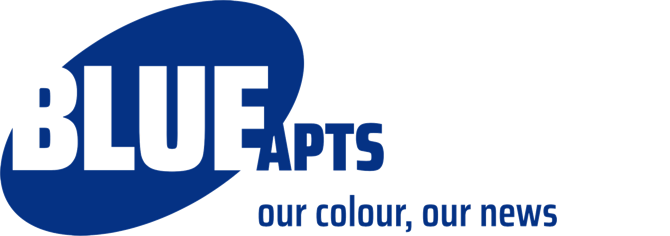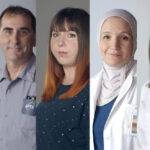Medical imaging technologists do much more than meets the eye
Medical imaging technologists do much more than meets the eye
Anick, Mathieu, Nathalie and Marie-Eve are all technologists working in the field of medical imaging, specializing, respectively, in medical electrophysiology, nuclear medicine, radiation oncology and radiodiagnostics. They point out that although the work they do is varied and vital, few people understand the demands of their profession, and their expertise too often goes unrecognized. It’s a safe bet that you’ll agree there’s a lot more to being a medical imaging technologist than meets the eye once you’ve read this article!
Medical electrophysiology (MEP)
Anick, an MEP technologist at the Montreal Heart Institute, is regularly mistaken for a nurse by patients, while her non-technologist co-workers sometimes refer to her as “the ECG girl” (for electrocardiogram) or “the button pusher.” She is confronted with the lack of understanding of her profession on a daily basis. “Too many syllables, eh?” she jokes. “Actually, people have a hard time making the connection with anything tangible, but it’s important to enlighten them whenever possible.”
So let’s set the record straight. For starters, medical electrophysiology doesn’t just involve doing electrocardiograms. The specialty entails performing many other tests that detect and record the electrical activity of the heart, but also tests involving the brain, nerves and other organs. And it’s not just a matter of attaching wires and electrodes and pushing buttons to make the magic happen. “Our practice requires a great deal of knowledge to enable us to interpret the data and ensure the safety of the person undergoing the test,” explains Anick. “How many ECG pauses were there? What’s the average heart rate? Did any arrhythmias occur? The MEP technologists are responsible for the initial interpretation, which is then verified by the physician.”
Anick applies her expertise in many different situations. In the emergency room, she may be called upon to assist in a resuscitation procedure, a fast-moving process during which she has to analyze the heart rhythm by ECG and communicate constantly with the urgent care team. In other departments, she performs examinations in a more relaxed way, although just as thoroughly and carefully, often providing a little distraction for vulnerable patients who may be hospitalized for long periods of time as they recover from bypass, valve replacement or other types of surgery. At times she is also called upon to instruct patients in the use of the cardiac event recorder, a small portable device that allows them to record their heart rate at home in the event of palpitations, shortness of breath, or dizziness.
The people who benefit from Anick’s expertise are a very diverse group. “People think we mainly work with the elderly, but we also work with 17- and 18-year-olds with congenital abnormalities, Alzheimer’s patients, people with intellectual disabilities, and others. It’s very interesting and rewarding work. I hope the profession will appeal to young people who are considering their career options,” she remarks.
Radiation oncology
Radiation oncology involves using high-energy ionizing radiation to treat localized malignant tumours. The goal of radiation therapy can be either curative or palliative, and radiation oncology technologists play an essential role in the treatment process. Once a patient has received a diagnosis and has decided to undergo radiation treatment, they will be guided through a process leading to administration of the treatment. The first phase is a simulation to determine the most comfortable, stable, safe and reproducible position for the patient during treatment. Nathalie, a radiation oncology technologist at the McGill University Health Centre (MUHC), explains that the patient’s active cooperation is essential during this preparatory phase, as it is throughout the treatment process: “It’s important to ensure that the patient understands the procedure and to build a relationship of trust with them. We need to determine whether they are in an optimal pain-free position, whether there are any medications that would increase their comfort level during the procedure, whether they are claustrophobic, and so on. The patient is part of the team, and if we don’t take the time to listen to them, the efficacy of the treatment may suffer as a result.”
The next step is taking radiological images, in the treatment position, using a computed tomography (CT) scanner, with injection of contrast material when indicated. The positioning of the patient is recorded and entered in the patient’s file along with photos; in some cases, a magnetic resonance imaging (MRI) may be performed. Nathalie transmits this data before proceeding with the second phase of the process: dosimetry. First, technologists outline the relevant organs, while the radiation oncologist defines the target volume and gives the dosimetry technologists the parameters required to prepare the dosimetry treatment plan. “The goal here is to deliver the maximum dose to the tumour while sparing surrounding healthy or critical tissue – this is the challenge of radiotherapy,” Nathalie observes.
Some types of cancer respond to treatment with a technique called brachytherapy. Different from external radiotherapy, it involves implanting radioactive sources inside the body, either through natural pathways or directly into an organ, using special applicators or catheters. While the radiation oncologist decides on the technique as well as the number of fractions (small doses) and doses, it is up to the radiation oncology technologists to administer the treatment in a skillful and caring way.
Nuclear medicine
Rather than focusing on organ anatomy, nuclear medicine evaluates organ physiology and function. For instance, in the case of stress fractures – which are difficult to detect by virtue of their small size – the scan will show how the bone is working to repair itself, thus helping to arrive at a diagnosis. This scan begins with the preparation of radiopharmaceuticals in the laboratory and by explaining the procedure to the patient. This is an essential step since patients are often alarmed at the prospect of being injected with a radioactive substance. The nuclear medicine technologist will then proceed with the injection – a procedure only they can perform.
For Mathieu, a nuclear medicine technologist at Hôpital du Saint-Sacrement who often works with breast cancer patients, this step can often be tricky due to the type of treatment administered to these patients. “This is the challenge with people receiving chemotherapy, which weakens the veins. It requires great skill because if the agent winds up in the patient’s hand rather than throughout the body, you simply won’t get an image,” explains Mathieu. Once the substance has been injected, more than fifty different tests can be carried out with highly specialized equipment, and the results can be used by pediatrics, oncology and cardiology. The final step is to process the image to allow the doctor to read and use it. Sometimes technologists can help train future specialists in nuclear medicine and participate in research protocols or in administering treatment.
A computer buff, Mathieu grew up with a father who worked in a laboratory and a mother who was a nurse, which helps explain his attraction to this field. However, the most rewarding aspect of his work is taking good care of patients. “People often come to us an hour after being diagnosed with cancer, with a long list of tests to get through,” he remarks. “Since our tests can take a while (3-4 hours), we have a little time to listen to them talk about their experience, what’s on their mind and what questions they have. And when we get a call from an oncologist thanking us for reassuring the patient, it makes our work that much more meaningful.”
Diagnostic radiology
Diagnostic radiology is the kind of medical imaging that the lay public is likely most familiar with, since at some point most of us have had an X-ray for a fracture, an ultrasound for a pregnancy, or a mammogram screening test. Marie-Eve, who initially worked as a technologist and then as a technical coordinator at the Pierre-Le Gardeur hospital, specializes in the lesser-known practice of angiography. Like Nathalie, Marie-Eve works closely with the radiologist to treat patients and make them comfortable. “In my line of work, we often deal with emergencies,” she notes. “For instance, a patient shows up with leg pain on exertion. The radiological examinations indicate a blocked artery. The patient is given the appropriate medication or sedation, and the radiologist slides a stent, a small metal spring, up the artery, to the site of the blockage, where it opens and, from within, removes the plaque formed by the accumulation of fat, sugar and fibrous tissue. The (previously dyed) blood immediately begins to circulate again and the patient feels better; it’s very gratifying.”
Marie-Eve’s interaction with the patient can also be more extended. As she is skilled at inserting all kinds of catheters, from the standard type to the picc-line, she gets to meet a wide variety of patients, including oncology patients whom she follows on a regular basis. More recently in the course of her career, she has begun to insert catheters for medical assistance in dying. “Apart from the technical side, an important part of my job is to talk to patients, explain the procedures, ask about their day, or engage in banter to take their mind off things,” says Marie-Eve. “Putting in catheters for the purposes of assisted dying has been quite an adjustment as it involves turning off the mindset of ‘saving’ the patient. But perhaps even more than other patients, these people need to make a connection and feel a sense of peace so that the procedure goes well. And that’s what we’re there for.”





